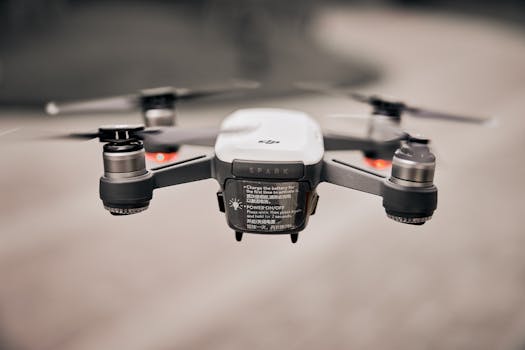
**
Paras Anti-Drone Tech Secures Major French Contract: Revolutionizing Counter-UAS Capabilities
The global counter-unmanned aerial vehicle (counter-UAS or C-UAS) market is experiencing explosive growth, driven by increasing security concerns and the proliferation of rogue drones. Paras Anti-Drone, a leading innovator in this critical sector, has announced a significant expansion into the European market with a major contract awarded by a prominent French firm. This strategic partnership marks a pivotal moment for both companies and underscores the growing need for sophisticated anti-drone technology.
Paras Anti-Drone's Breakthrough Technology Takes Center Stage
This latest contract highlights Paras Anti-Drone's dedication to developing cutting-edge counter-drone systems. Their technology, praised for its effectiveness and adaptability, utilizes a combination of advanced detection, tracking, and neutralization techniques. The specific details of the French contract remain undisclosed for confidentiality reasons, but sources indicate it involves a significant deployment of Paras's flagship systems across critical infrastructure and public spaces.
Key Features of Paras Anti-Drone Technology:
- Multi-sensor fusion: Paras's systems integrate radar, electro-optical/infrared (EO/IR) cameras, and acoustic sensors for comprehensive drone detection. This multi-layered approach ensures high accuracy and minimizes false positives, a crucial aspect of effective counter-drone operations.
- AI-powered analysis: Advanced artificial intelligence algorithms enable rapid threat assessment and prioritization. This speeds up response times and ensures that security personnel focus on the most immediate dangers.
- Jamming and spoofing capabilities: The systems utilize sophisticated electronic warfare techniques, including jamming and spoofing, to neutralize hostile drones by disrupting their communication and navigation systems.
- Kinetic neutralization: In scenarios requiring immediate physical neutralization, the Paras systems can deploy kinetic energy solutions, such as directed energy weapons or net-launchers, to safely disable threatening drones.
- Modular and scalable design: The technology is designed to be flexible and adaptable, catering to diverse operational needs and environments. This allows for seamless integration into existing security infrastructure.
The Growing Threat of Rogue Drones and the Demand for Robust Countermeasures
The increasing accessibility and affordability of drones have led to a concerning rise in their unauthorized use. This includes everything from airspace violations and border incursions to potential terrorist attacks and industrial espionage. The consequences of such incidents can be severe, ranging from property damage and data breaches to significant risks to public safety. This is particularly concerning in densely populated urban areas and for critical infrastructure such as power plants, airports, and government buildings.
Challenges in Counter-UAS Technology:
- Drone detection range: The challenge of detecting drones at long ranges remains a critical factor, particularly with the emergence of stealth drones.
- Advanced drone evasion techniques: Drones are constantly evolving, employing techniques to evade detection and neutralization. The technology needs to keep pace.
- Regulatory frameworks: Establishing comprehensive and effective regulatory frameworks for drone operations is crucial to mitigating potential risks.
- Cost-effectiveness: Finding a balance between effectiveness, reliability, and affordability is a key challenge in developing counter-UAS technology.
The Significance of the French Contract for Paras Anti-Drone
This contract with the leading French firm represents a significant milestone for Paras Anti-Drone. It not only showcases the effectiveness of their technology but also provides a strong foothold in the lucrative European counter-UAS market. France, a major player in European defense and security, is proactively investing in advanced counter-drone capabilities to protect its national interests and critical infrastructure. This partnership underscores the growing recognition of Paras Anti-Drone as a key player in global counter-UAS solutions.
Future Implications and Market Growth:
The growing demand for reliable counter-drone technology promises significant market expansion in the coming years. This is further fueled by increasing government investments and the rising adoption of sophisticated solutions by private sector organizations. Paras Anti-Drone, with its proven technology and strategic partnerships, is well-positioned to capitalize on this growth and play a pivotal role in shaping the future of counter-UAS security.
Conclusion: A Necessary Investment in National Security
The deployment of advanced counter-UAS systems is no longer a luxury but a necessity for ensuring national security and protecting critical infrastructure. Paras Anti-Drone's partnership with the French firm highlights a growing trend of collaboration between technology companies and government agencies to address the evolving threat posed by rogue drones. The innovative technology developed by Paras promises to significantly improve counter-drone capabilities, enhancing safety and security worldwide. The success of this partnership will likely inspire further collaborations and drive further innovation in the rapidly expanding counter-UAS market. The focus on AI-powered solutions, multi-sensor fusion, and adaptable systems will be crucial in securing our skies against future threats. This technological advancement represents a significant step forward in securing a safer future.




















